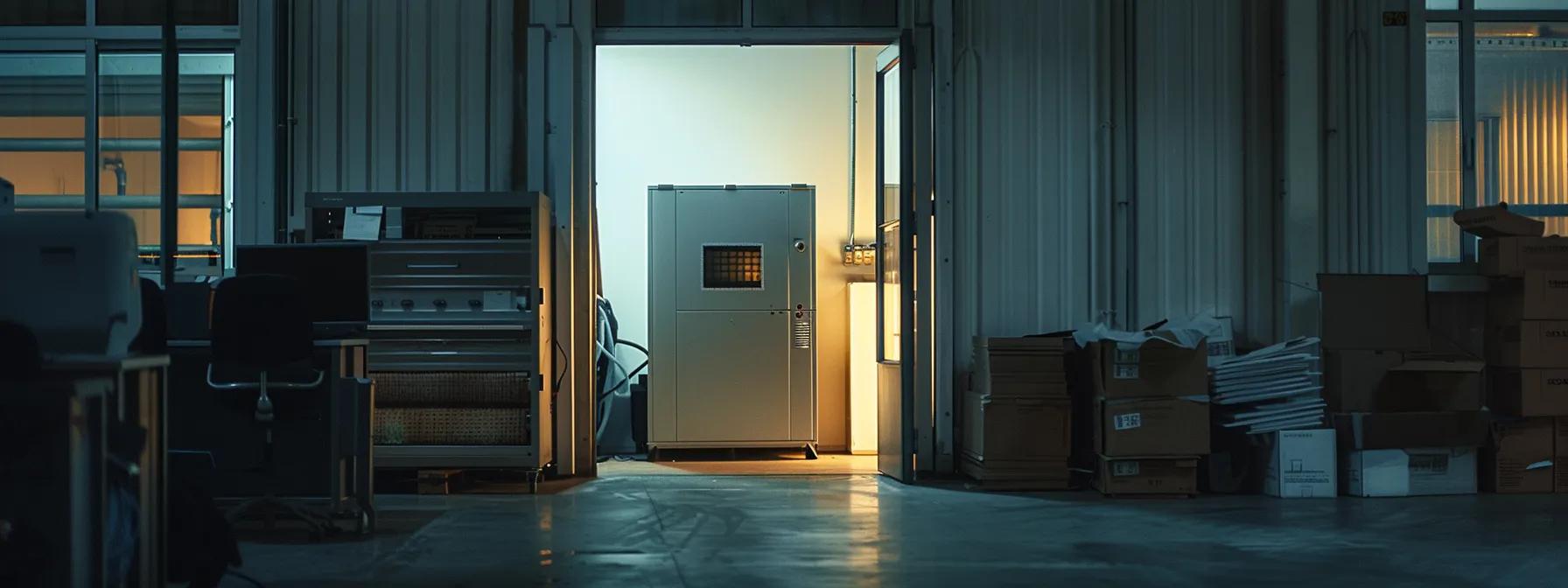Avoid Key Furnace Installation Pitfalls in Savannah GA Today

Furnace installation directly impacts your heating system’s performance, safety, and longevity. In Savannah GA, improperly handled installations can lead to higher energy bills, inconsistent heating, and serious safety hazards, which can affect not only furnaces but also heat pumps if they are not properly maintained. This discussion highlights common pitfalls and stresses the importance of hiring certified HVAC professionals to ensure your system meets local building codes, operates efficiently, and benefits from reliable maintenance-plans.
Identify Common Furnace Installation Mistakes in Savannah GA
Every furnace installation must be executed precisely to avoid complications. Below are common mistakes homeowners should be aware of.
Recognize Improper Sizing of Your Furnace for Your Home
Matching a furnace’s capacity to your home’s square footage, insulation, and climate is essential. Modern furnaces and heat pumps are now designed to meet these challenges more efficiently. A furnace that is too small will struggle to provide adequate heat, while an oversized unit will cycle on and off frequently, reducing efficiency and lifespan; that’s why many homeowners also opt for regular maintenance-plans to keep their systems in peak condition. Incorrect sizing can reduce efficiency by up to 25%, increasing energy consumption and stressing system components. Homeowners should rely on certified HVAC professionals who use detailed load calculations (Manual J and Manual D) to determine the correct furnace size, ensuring optimal performance.
Understand Lack of Proper Ductwork for Efficient Airflow
Proper airflow is critical for even heating throughout the home. For example, properly maintained furnaces and heat pumps help ensure that energy losses are minimized even when minor duct leakage occurs. Poorly designed, sized, or sealed ductwork can lead to significant energy losses—with studies suggesting a 20% drop in system efficiency due to duct leakage. In Savannah’s fluctuating climate, gaps or misaligned duct connections may result in uneven heating and higher utility bills. It is crucial that HVAC professionals measure, seal, and balance ductwork to guarantee optimal airflow and efficient heat transfer, while consistent maintenance-plans further help prevent performance issues over time.
Detect Flawed Thermostat Installation Issues
A thermostat that is incorrectly installed, positioned too far from living areas, exposed to direct sunlight, or not calibrated properly can distort temperature readings, potentially affecting furnaces. This leads to frequent cycling and uneven heating. Poor thermostat placement can increase energy costs by 10% or more each heating season. Homeowners should ensure that the thermostat is installed in a neutral location, consider smart thermostats or heat pumps to further enhance energy efficiency and comfort, and review maintenance-plans to keep all systems operating optimally.
Spot Ignoring Local Building Codes for Furnace Installations
Local building codes in Savannah GA ensure that heating installations, including furnaces and heat pumps, meet safety standards such as clearance distances, combustion air requirements, and proper venting. Failure to adhere to these codes can result in fines, forced removal of the system, or hazards like carbon monoxide buildup. Hiring certified professionals who understand and follow local regulations minimizes these risks and guarantees that all installation work is inspected, approved, and supported by regular maintenance-plans.
Address Installing the Furnace on Uneven Ground
A level, stable surface is vital for the proper operation of a furnace. In addition to ensuring the correct function of furnaces and heat pumps, installing a furnace on uneven ground can cause vibration issues, improper gas connections, and premature wear on mechanical parts. Misalignment may also damage adjacent ductwork and create noise problems. Professional HVAC technicians often implement proven maintenance-plans, use proper leveling pads, and secure mounting practices to ensure that the system runs quietly and efficiently. Homeowners should inspect the installation site to confirm that it is properly leveled.
Notice Poor Clearances Around the Furnace Unit
Maintaining adequate clearances around the furnace is necessary for safe operation and easy maintenance, as recommended in various maintenance-plans. Manufacturers specify minimum clearances to allow heat expulsion and facilitate inspections and repairs for furnaces and heat pumps. Insufficient clearance can increase the risk of overheating or restrict airflow, potentially shortening the furnace’s lifespan. Strict adherence to manufacturer guidelines and local codes is essential for both safety and efficient operation.
Analyze Importance of Professional Furnace Installation in Savannah

Professional installation is essential to avoid the above mistakes and ensure safety and efficiency.
Evaluate Risks of DIY Furnace Installation in Local Climate
While DIY installations might seem to offer cost savings, particularly in cases involving furnaces and heat pumps, they often result in poor performance and hazardous conditions in Savannah’s humid and variable climate. Without proper testing, load calculations, and certification, DIY installations may lead to hazardous emissions, voided warranties, and increased repair costs. The unique local conditions demand that the furnace be precisely calibrated and installed using professional expertise along with appropriate maintenance-plans to avoid long-term inefficiencies and potential liability.
Learn Benefits of Hiring Certified HVAC Technicians
Certified HVAC technicians ensure that every aspect of the installation—sizing, ductwork, thermostat placement, and code compliance—is performed correctly. They work with furnaces and heat pumps to optimize system performance. Their extensive experience, adherence to the latest NEC and local standards, and use of precision tools (including detailed load calculations) result in improved energy efficiency, extended equipment lifespan, and lower energy bills. Their installation comes with warranties and professional maintenance-plans advice, ensuring added value and peace of mind.
Assess the Impact of Errors on System Efficiency
Installation errors, including improper sizing and poorly executed ductwork in heat pumps, cumulatively reduce system efficiency. Even a single error in furnaces can diminish output by 5–10%, and multiple errors may lower efficiency by up to 40%. The resulting higher monthly energy costs, increased component wear, and reduced system lifespan clearly illustrate why professional installation and proper maintenance-plans are critical in saving money and ensuring reliable heating.
Understand Warranty Limitations for DIY Installations
Furnace manufacturers offer attractive warranties when installations are handled by certified professionals. diy installations not only risk subpar performance but can also void these warranties. for example, regular maintenance-plans can help ensure that furnaces and heat pumps operate efficiently over time, potentially extending their lifespan. This leaves homeowners liable for repairs or replacements, which may eventually outweigh any initial savings. Proper installation by experts protects the furnace’s warranty and ensures long-term reliability and safety.
Examine Local Regulations on Furnace Installations
Savannah GA enforces strict local regulations for furnace installations, including considerations for furnaces and heat pumps. These rules cover materials, installation techniques, permits, and required inspections. Non-compliance can lead to fines, forced reinstallation, and potential legal issues. Professional HVAC companies stay updated on these regulations and implement maintenance-plans to reduce the risk of future complications and safeguard your investment.
Explore Signs of Incomplete Furnace Installations
Early detection of an incomplete installation can save both money and prevent future emergencies.
Identify Inconsistent Heating Across Different Rooms
Even heat distribution is a key indicator of a correctly installed furnace. Incorporating regular maintenance-plans can help ensure that your furnaces and heat pumps function optimally. If some rooms are consistently cooler or warmer, it may be due to unbalanced ductwork, poor insulation in certain sections, or an incorrectly sized furnace. Inconsistencies in heating not only cause discomfort but also lead to energy wastage and higher bills. A professional thermal mapping of your home can help identify and rectify such issues.
Check for Excess Noise From the Heating System
A properly installed furnace should operate quietly. In many modern homes, furnaces and heat pumps are integrated into the heating system to maximize energy efficiency, and following regular maintenance-plans can help prevent issues. Unusual sounds such as banging, whistling, or excessive vibrations may indicate mounting issues, misaligned ducts, or faulty internal components. Such noise problems can signal stress on the system and can lead to further damage if not addressed promptly. Homeowners in Savannah should investigate abnormal noises to avoid escalating repair costs.
Look for Strange Odors After Furnace Activation
Burning or chemical-like odors after furnace activation in furnaces are red flags. These smells could be due to wiring problems, overheated components, or combustion issues that might result in carbon monoxide leaks. Such odors require immediate professional evaluation, and a review of regular maintenance-plans to prevent potential health hazards and ensure proper venting and safe operation of the system, including the inspection of heat pumps.
Monitor Your Energy Bills for Unexplained Increases
A sudden increase in energy bills without a change in usage may point to installation inefficiencies. Poor duct sealing, incorrect furnace sizing, or thermostat issues force the system to work harder, especially when older furnaces are in use. Incorporating heat pumps and regular maintenance-plans can help improve performance and efficiency. Monitoring your bills can help identify hidden problems early, prompting a professional review to restore efficiency and reduce costs.
Notice Frequent System Cycling on and Off
Frequent on-off cycling is a common sign of installation errors, such as improperly sized furnaces or misconfigured heat pumps, or an improper thermostat calibration. This rapid cycling not only causes temperature fluctuations but also puts extra stress on the system, accelerating wear and tear. HVAC specialists can use diagnostic tools to determine cycle frequency and advise necessary adjustments, and they often recommend regular maintenance-plans to prevent potential long-term issues. Any signs of frequent cycling should prompt an immediate inspection.
Review Maintenance Needs After Installation

Consistent post-installation maintenance is key to a furnace’s long-term efficiency and reliability.
Create a Regular Maintenance Schedule for Your Furnace
Regular maintenance, including reliable maintenance-plans, is fundamental to an efficient heating system that supports furnaces and heat pumps. Routine inspections help detect early wear, debris in ductwork, and filter degradation, which in turn enhance energy efficiency by 10–15%. Professionals recommend seasonal checks—once in the fall and once in the spring—to preemptively address issues before they lead to costly repairs. Scheduling annual inspections with certified HVAC technicians is essential for sustained performance.
Learn Key Maintenance Tasks to Ensure Longevity
Essential maintenance tasks include monthly air filter checks (with replacement every three months during heavy use), duct cleaning, and periodic cleaning of the blower and burner assembly. Applying regular maintenance-plans to both furnaces and heat pumps can further optimize performance. Lubricating moving parts also helps reduce friction and noise while preserving performance. Following these practices helps stabilize energy consumption and prolongs the life of your furnace, reducing the need for frequent emergency service calls.
Understand the Importance of Professional Inspections
Professional inspections use specialized tools to check for leaks, measure airflow, and verify that electrical and gas connections are secure. In addition, inspectors often recommend maintenance-plans for furnaces and heat pumps to ensure optimal performance. These inspections ensure that the furnace operates within manufacturer specifications and complies with local codes. Early detection of issues through professional diagnostics prevents minor problems from becoming major, ensuring both safety and economic operation.
Discover Signs Indicating the Need for Repairs
Even with regular maintenance and effective maintenance-plans, signs that repairs are needed include unusual noises, fluctuating heat output, rising energy bills, and visible corrosion on components. Physical damage to ductwork, furnaces, or other parts signals a need for immediate attention. In systems with heat pumps, contacting a professional HVAC technician as soon as these signs appear can prevent a complete system failure and reduce overall repair costs.
Compile a List of Trusted HVAC Service Providers
Homeowners should prepare a list of trusted HVAC companies in Savannah GA based on certifications, customer feedback, and transparent pricing. Many providers offer maintenance-plans that ensure regular upkeep. Having a pre-vetted list ensures quick access to reliable service in emergencies, with specialists skilled in furnaces and heat pumps that can promptly address critical issues. Establishing a good relationship with a reputable provider further ensures long-term maintenance and repairs that keep your system operating at its best.
Investigate Cost Factors in Furnace Installation
Understanding cost factors helps homeowners plan for furnace installation and avoid unexpected expenses.
Evaluate Average Installation Costs in Savannah GA
In Savannah GA, professional furnace installations, including furnaces and heat pumps, typically range from $3,000 to $7,000. This price includes labor, materials, and all work needed to meet local codes, often bundled with maintenance-plans for long-term performance. Obtaining multiple quotes that itemize ductwork modifications, thermostat installation, and other charges helps set realistic expectations and prevents financial surprises.
Analyze Cost Differences Between Various Furnace Types
Different furnace types come with varying costs. High-efficiency furnaces (efficiency ratings above 95%) tend to cost more upfront due to advanced technology and materials, while less efficient models, including heat pumps, may have lower initial costs but incur higher operating expenses. A cost-benefit analysis considering both purchase price, long-term energy savings, and maintenance-plans options is essential for making an informed decision.
Understand the Financial Benefits of Energy-Efficient Models
Energy-efficient models such as heat pumps reduce both environmental impact and operating costs. Modern furnaces optimized for heat transfer minimize energy use, lowering utility bills by 15–20%. Many local utility companies and state programs in Georgia offer rebates and incentives for energy-efficient installations, further offsetting initial costs. Exploring these financing options, potential tax benefits, and comprehensive maintenance-plans can make energy efficiency a smart investment.
Compare Quotes From Multiple HVAC Contractors
Obtaining competitive quotes from several HVAC contractors, especially those specializing in furnaces and heat pumps, can reveal significant pricing and service differences. Homeowners should evaluate service contracts, warranty terms, and reviews before deciding, and it is wise to inquire about maintenance-plans for prolonged system efficiency. Key comparisons include labor rates, equipment markups, permit fees, and any hidden costs. In Savannah GA, obtaining at least three bids ensures a fair price and quality installation from a reputable provider.
Identify Financing Options for Your Installation
Due to the high upfront cost of furnace installation for furnaces, many HVAC companies offer financing plans—including low-interest loans and extended payment options—to ease the financial burden. Researching manufacturer-backed financing or local utility incentives helps make energy-efficient solutions, such as heat pumps, more affordable. An in-depth consultation with your HVAC provider can help determine the best financing option and maintenance-plans for your financial situation.
Uncover Long-Term Issues of Poorly Installed Furnaces

A poorly installed furnace can lead to long-term challenges that affect safety, efficiency, and maintenance costs.
Recognize Safety Hazards From Faulty Installations
Faulty installations can create serious safety hazards, such as carbon monoxide poisoning, fire risks, gas leaks, and issues with furnaces. A misaligned fuel line or improper venting in heat pumps may lead to dangerous gas accumulations, as evidenced by numerous emergency service calls. Homeowners must understand that initial savings from a DIY approach can become costly if safety is compromised and maintenance-plans are neglected.
Assess the Environmental Impact of Inefficient Units
Inefficient heating systems, such as furnaces, forced to work harder due to installation errors produce more emissions, increasing your environmental footprint. Poor installation of heat pumps not only drives up energy consumption but also leads to a higher carbon output over time. Proper installation, along with regular maintenance-plans, reduces energy use and lowers greenhouse gas emissions while also saving on energy bills.
Examine Long-Term Repair Costs for Installation Mistakes
Installation errors can lead to recurring repair costs that far exceed any initial savings, especially when issues arise with furnaces. Components such as ductwork, burners, thermostats, and heat pumps may experience accelerated wear and require costly repairs or replacements. Data from reputable HVAC companies indicate that properly installed systems experience fewer breakdowns and lower long-term repair expenses. Moreover, regular maintenance-plans can significantly reduce the likelihood of such costly errors.
Identify the Need for Early Replacements
Mistakes in installation—such as improper sizing, poor clearance, or unbalanced components—can greatly shorten a furnace’s service life. Systems with such issues may need replacement as early as 10 years, compared to a typical lifespan of 15–20 years. Regular maintenance-plans are recommended to monitor performance and prevent early failures in furnaces. Moreover, similar considerations apply to heat pumps, which also require proper installation to ensure long-term efficiency.
Discuss the Importance of Compliance With Industry Standards
Strict adherence to industry standards, such as those from the Air Conditioning Contractors of America (ACCA), is crucial for safety and durability—especially when it comes to the proper installation of furnaces. Rushed or amateur installations that ignore these standards and skip essential maintenance-plans can result in failures and inefficiencies. In Savannah GA, complying with recognized installation practices not only enhances safety and performance but also preserves your heating investment and supports the integration of heat pumps.
Table: Comparison of Key Furnace Installation Factors
Before concluding, the table below summarizes key factors in furnace installation quality along with their benefits:
This table demonstrates that investing in professional installation pays off in efficiency, safety, and long-term savings.
Frequently Asked Questions
Q: How can I tell if my furnace is incorrectly sized for my home? A: Inconsistent heating, frequent cycling, and high energy bills may indicate an incorrectly sized furnace. In many cases, reviewing furnaces and heat pumps as part of regular maintenance-plans can help highlight inefficiencies and the need for adjustments. Professional load calculations can verify if the unit matches your home’s needs.
Q: What are the risks associated with poor ductwork? A: Poorly designed or sealed ductwork in systems like furnaces and heat pumps can lead to uneven airflow, reducing efficiency by up to 20% and causing increased energy costs, discomfort, and premature wear on the heating system. Regular maintenance-plans are essential to ensure these systems operate optimally.
Q: Why is a properly located thermostat essential for furnace performance? A: A correctly installed thermostat prevents misreadings that cause frequent cycling, ensuring stable temperature control and improved energy efficiency, and is a key component to many maintenance-plans. It also helps optimize performance in both furnaces and heat pumps.
Q: Can DIY furnace installation affect my warranty? A: Yes, many manufacturers void warranties if installations, especially those involving furnaces or heat pumps without proper maintenance-plans, are not performed by certified professionals, leaving homeowners liable for repairs and potential hazards.
Q: What preventive maintenance tasks should I perform post-installation? A: Regular filter changes, annual inspections, and duct cleaning—as part of effective maintenance-plans—along with calibration checks by a professional technician are critical to maintaining optimal furnace operation in furnaces and heat pumps, thereby extending their life.
Q: How often should I schedule professional inspections for my furnace? A: It is generally recommended to have your furnace inspected annually, preferably before the heating season begins, to detect early signs of wear or installation issues. Additionally, incorporating regular maintenance-plans can help ensure the longevity of your furnaces. If you also use heat pumps, following similar inspection routines can be beneficial.
Q: Are there financing options available for furnace installation? A: Many local HVAC companies and utility programs offer financing options, including low-interest loans and installment plans, to ease the upfront costs. These options can be used not only for installing furnaces but also for switching to heat pumps, while some providers even offer bundled maintenance-plans to keep systems in top condition.
Q: What are the consequences of not adhering to local building codes during installation? A: Non-compliance can lead to safety hazards, fines, and even the need to redo the installation of critical systems such as furnaces and heat pumps, dramatically increasing costs. Additionally, failing to implement regular maintenance-plans could further compromise installation integrity and overall home safety.
Final Thoughts
Furnace installation requires meticulous attention to detail, strict compliance with local codes, and the expertise of certified hvac professionals. In addition to furnaces, many homeowners are now considering heat pumps as an alternative solution for year-round efficiency. Homeowners in Savannah GA must remain vigilant against common pitfalls such as improper sizing, poor ductwork, and flawed thermostat installation, and it is wise to couple these efforts with comprehensive maintenance-plans to ensure lasting system performance. By understanding these challenges and monitoring your system for irregularities in sound, heat distribution, and energy bills, you can ensure long-term efficiency and safety. Investing in professional installation not only minimizes repair costs but also provides the peace of mind that your heating system will reliably deliver comfort for years to come.